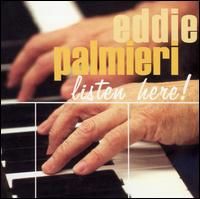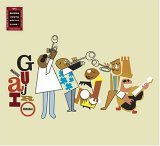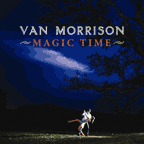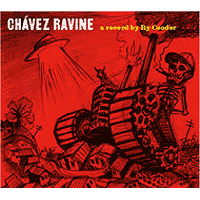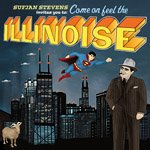What is Cabaret?
With the 4th Annual AIP Cabaret Festival scheduled at the Long Beach Public Library from May 18-21, I thought that I would take some time to look at this unique genre.
Below you will find an explanation of "Cabaret," taken from Wikipedia, the online encyclopedia.
Cabaret
From Wikipedia, the free encyclopedia
Cabaret is a form of entertainment featuring comedy, song, dance, and theatre, distinguished mainly by the performance venue — a restaurant or nightclub with a stage for performances and the audience sitting around the tables (often dining or drinking) watching the performance. The turn of the 20th century introduced a revolutionized cabaret culture. Performers included Josephine Baker and Brazilian drag performer João Francisco dos Santos (aka Madame Satã), both of African descent. The venue itself can also be called a "cabaret." These performances could range from political satire to light entertainment, each being introduced by a master of ceremonies, or MC.
The term is a French word for the taprooms or cafés, where this form of entertainment was born, as a more artistic type of café-chantant. It is derived from Middle Dutch cabret, through Old North French camberette, from Late Latin camera. It basically means "small room."
Cabaret also refers to a Mediterranean style brothel — a bar with tables and women who mingle with and entertain the clientele. Traditionally these establishments can also feature some form of stage entertainment: often singers & dancers — the bawdiness of which vary with the quality of the establishment. It is the more sophisticated and classier cabaret which eventually engendered the type of establishment and art-form which is the subject of the remainder of this article.
American Cabaret
In the United States, Cabaret diverged into several different and distinct styles of performance mostly due to the influence of Jazz Music. Chicago Cabaret focused intensely on the larger band ensembles and reached its zenith in the Speakeasies, and Steakhouses (Like The Palm (restaurant)) of the Prohibition Era.
New York Cabaret never developed along the darkly political lines of its European counterparts, but did feature a great deal of social commentary. When New York Cabarets featured Jazz, they tended to focus on famous vocalists like Eartha Kitt and Capucine (Germaine Lefebvre) rather than instrumental musicians.
Cabaret in the United States began to disappear in the sixties, due to the rising popularity of rock concert shows and television variety shows. Perhaps the greatest living American Cabaret performer is Eartha Kitt, famous for her role as Catwoman in the tongue in cheek television series, Batman. The Art form itself still survives vestigially in two popular entertainment formats: Stand-up comedy, and in the dark comic performances that may still be seen in the drag show and camp performances in the nations GLBT community.
Cabaret is currently undergoing a renaissance of sorts in the United States as new generations of performers reinterpret the old forms in both music (see Dark Cabaret below) and theatre.
What is your "take" on Cabaret? Please post your own definitions.
Please note - there is a Cabaret music display in the media center. Here you will find popular recordings from such artists as Barbara Cook, Ute Lemper, Edith Piaf, and many, many more.
Below you will find an explanation of "Cabaret," taken from Wikipedia, the online encyclopedia.
Cabaret
From Wikipedia, the free encyclopedia
Cabaret is a form of entertainment featuring comedy, song, dance, and theatre, distinguished mainly by the performance venue — a restaurant or nightclub with a stage for performances and the audience sitting around the tables (often dining or drinking) watching the performance. The turn of the 20th century introduced a revolutionized cabaret culture. Performers included Josephine Baker and Brazilian drag performer João Francisco dos Santos (aka Madame Satã), both of African descent. The venue itself can also be called a "cabaret." These performances could range from political satire to light entertainment, each being introduced by a master of ceremonies, or MC.
The term is a French word for the taprooms or cafés, where this form of entertainment was born, as a more artistic type of café-chantant. It is derived from Middle Dutch cabret, through Old North French camberette, from Late Latin camera. It basically means "small room."
Cabaret also refers to a Mediterranean style brothel — a bar with tables and women who mingle with and entertain the clientele. Traditionally these establishments can also feature some form of stage entertainment: often singers & dancers — the bawdiness of which vary with the quality of the establishment. It is the more sophisticated and classier cabaret which eventually engendered the type of establishment and art-form which is the subject of the remainder of this article.
American Cabaret
In the United States, Cabaret diverged into several different and distinct styles of performance mostly due to the influence of Jazz Music. Chicago Cabaret focused intensely on the larger band ensembles and reached its zenith in the Speakeasies, and Steakhouses (Like The Palm (restaurant)) of the Prohibition Era.
New York Cabaret never developed along the darkly political lines of its European counterparts, but did feature a great deal of social commentary. When New York Cabarets featured Jazz, they tended to focus on famous vocalists like Eartha Kitt and Capucine (Germaine Lefebvre) rather than instrumental musicians.
Cabaret in the United States began to disappear in the sixties, due to the rising popularity of rock concert shows and television variety shows. Perhaps the greatest living American Cabaret performer is Eartha Kitt, famous for her role as Catwoman in the tongue in cheek television series, Batman. The Art form itself still survives vestigially in two popular entertainment formats: Stand-up comedy, and in the dark comic performances that may still be seen in the drag show and camp performances in the nations GLBT community.
Cabaret is currently undergoing a renaissance of sorts in the United States as new generations of performers reinterpret the old forms in both music (see Dark Cabaret below) and theatre.
What is your "take" on Cabaret? Please post your own definitions.
Please note - there is a Cabaret music display in the media center. Here you will find popular recordings from such artists as Barbara Cook, Ute Lemper, Edith Piaf, and many, many more.

